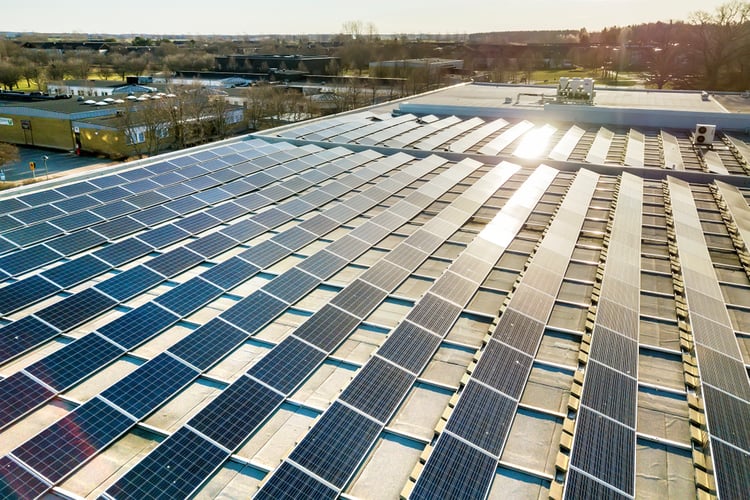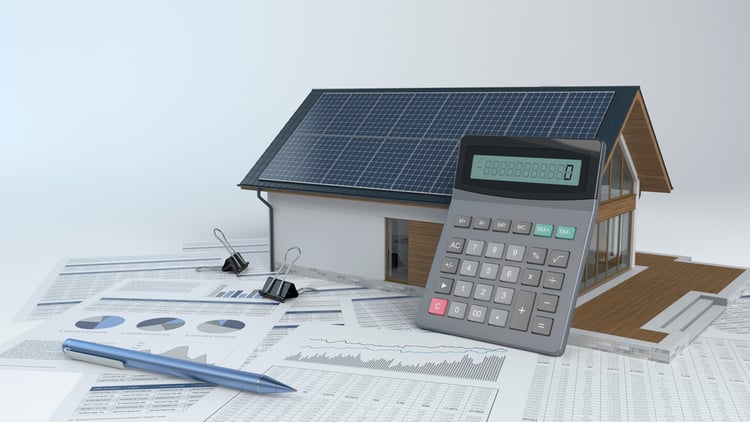How Solar Power Can Help Buildings Meet the NYC Emissions Law

The NYC Climate Mobilization Act will require all buildings larger than 25,000 square feet to reduce their emissions below certain limits starting from 2024. The emission limits for each building type are covered in Local Law 97 of 2019, and there is an annual penalty for buildings with emissions above their limit. The law also covers the emission factors for the five main energy sources used in buildings: electricity, natural gas, district steam, #2 fuel oil and #4 fuel oil.
- Building owners can lower their emissions by reducing energy consumption or by switching to cleaner sources.
- LL97 also allows the purchase of renewable energy credits and carbon offsets to meet a part of the emissions reduction target.
Solar power systems replace electricity from the power grid with clean onsite generation. Natural gas is one of the main electricity sources in New York, representing 40% of the state’s generation according to the US Energy Information Administration. This means every kWh obtained from solar panels is potentially replacing one kWh from a gas-fired power station.
Reduce your electricity bills and building emissions with a solar power system.
In this article, we will discuss how solar power could be used in NYC buildings that are subject to the emissions law. LL97 has an emissions factor of 0.000288962 tCO2eq / kWh, which is equivalent to almost 289 kg of emissions for every 1,000 kWh consumed from the grid. When the electricity comes from solar panels, these emissions are avoided.
How Much Can Buildings Reduce Emissions with Solar Power?

The main requirement to install a solar power system is having an area that is not covered by the shadows of other buildings. Buildings like distribution centers and shopping malls can achieve the best results, since they have plenty of roof area with respect to their floor area. On the other hand, solar power has less potential in high-rise buildings, since the available roof area is small compared with the total floor space. Consider that Local Law 97 calculates the emissions limits based on two factors - building occupancy classification and square footage.
- Generally, you can fit around 15 watts of solar capacity per square foot of roof space.
- This means a building with 20,000 sf available can use a 300-kW solar array.
- In a good site, a system with this capacity generates over 420,000 kWh per year.
Considering the LL97 emissions factor (0.000288962 tCO2eq / kWh), the solar installation in the example above would cut building emissions by 121.36 metric tons per year. Since the penalty is $268 per ton, a building above the limit would be avoiding $32,526 in annual penalties.
- According to the latest data from the National Renewable Energy Laboratory, solar power systems in the size range of 100-500 kW have an average price of $2.44/W in New York.
- This means a 300-kW system would cost around $732,000, but the net price is reduced to $541,680 with the 26% federal tax credit.
Assuming an electricity price of 20 cents/kWh, a solar output of 420,000 kWh/year saves you $84,000. However, the building is also saving $32,526 in LL97 penalties, which brings the total economic benefit to $116,526 per year. The 300-kW solar power system in this example has a payback period of 6.4 years based on electricity savings alone, but only 4.6 years when the avoided penalties are considered. Solar panels from quality brands last more than 25 years, and the payback period is only a small fraction of their service life in this case.
Financing Your Solar Installation and Paying the Loan with Savings

Even when a company can pay for a solar power system upfront, there is an impact on cash flow and an opportunity cost. Using loan financing for a solar power project is an attractive option for commercial buildings, since the loan can be paid off with the savings achieved. In the case of NYC, building owners get two types of savings that can be used to pay - electricity savings and avoided penalties.
- With 3% interest and a 10-year term, a $541,680 loan results in payments of $5,230.50/month, or $62,766 per year.
- With $84,000 in electricity savings and $32,526 in avoided penalties, there is more than enough cash flow to pay the loan, and still reach net savings on the first year.
Solar power is an excellent complement for an energy retrofit project, since the building will be reducing consumption and switching to a cleaner electricity source at once. The best recommendation is starting with an energy audit, to identify the most effective measures to save energy and reduce emissions, and also the solar generation potential of your building.

Michael Tobias
Michael Tobias, the Founding Principal of NY Engineers, currently leads a team of 150+ MEP/FP engineers and has led over 4,000 projects in the US
Join 15,000+ Fellow Architects and Contractors
Get expert engineering tips straight to your inbox. Subscribe to the NY Engineers Blog below.

